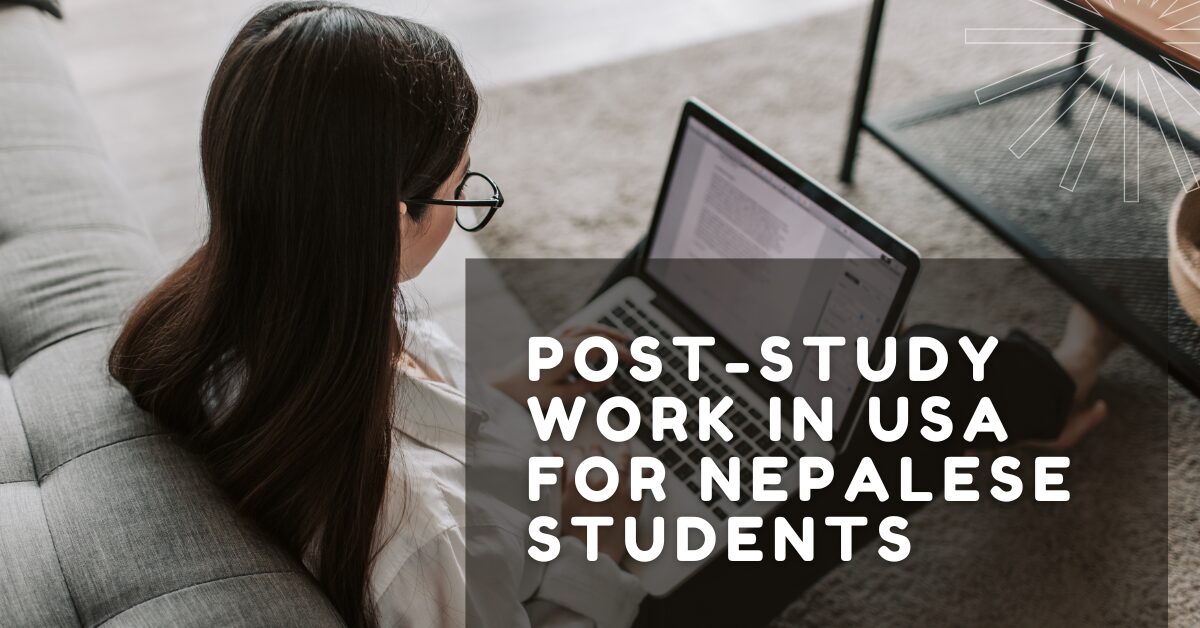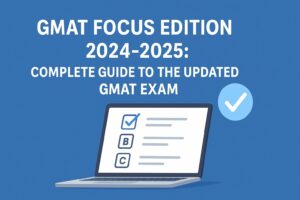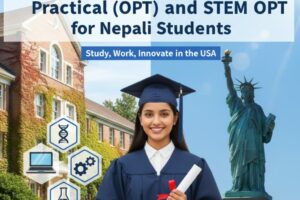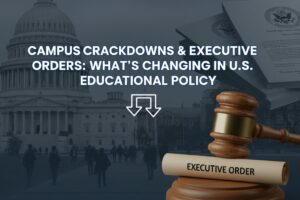Post-Study Work in USA for Nepalese Students

Looking for a post-study work visa to gain hands-on experience after graduation in the U.S.? F-1 students can gain work experience in the US by engaging in two types of practical training (Curricular Practical Training and Optional Practical Training) during or after the program ends.
Curricular Practical Training (CPT)
Curricular Practical Training (CPT) lets you work in the U.S. to gain experience related to your field of study as part of your academic program. You can do CPT part-time (20 hours per week or less), and full-time (20 hours or more) after getting approval from your university or college’s International Student Office (ISO). However, working in CPT full-time for 12 months or more, you will lose eligibility for Optional Practical Training (OPT). If you work part-time, or full-time for less than 12 months, you remain eligible for OPT.
Apply for CPT
To apply for CPT, you must have a confirmed job offer, and the work either must be required for your degree or offer academic credit. CPT is a great opportunity to gain work experience while studying in the U.S., but it is mandatory to follow the rules carefully to maintain your visa status and ensure eligibility for future work options like OPT.
Optional Practical Training (OPT): Post-Work Visa for Nepalese Students in the USA
Optional Practical Training (OPT) lets international students work in a job related to their course field after graduation. If you finish a degree in the U.S., you can work for 12 months. But, if you have a STEM degree you can work for 24 extra months if you apply for an OPT extension. To qualify, your degree must be on the STEM Designated Degree Program list, and your employer must be enrolled in E-Verify, an internet-based system.
How to Apply
First, ask your Designated School Official (DSO) to recommend your OPT in the Student and Exchange Visitor Information System (SEVIS). Your DSO will update your Form I-20 to show this recommendation.Next,submit Form I-765 (Application for Employment Authorization) to U.S. Citizenship and Immigration Services (USCIS) with the correct fee and any required documentation as per the form’s instructions.
When to Apply:
- Earliest: You can apply up to 90 days before you complete your degree.
- Latest: Your application must be filed within 60 days after your degree completion.
- Important: You must apply within 30 days after your DSO enters the OPT recommendation into SEVIS.
Students cannot start their OPT employment until USCIS approves Form I-765 and you receive your Employment Authorization Document (EAD).
OPT Extension for STEM Graduates
If you graduate from a STEM-designated program, you can extend this time for an extra 24 months, and you could have a total of three years to gain valuable work experience in the U.S. If a student submits their STEM OPT extension application on time and their OPT expires while it is being processed, their employment authorization will automatically be extended for 180 days.
What if my post-completion OPT is denied?
If your OPT application is denied, you must leave the U.S. by the end of your 60-day grace period unless you can switch to another status or maintain F-1 status by transferring to another university or college. Otherwise, you risk being labeled with “illegal presence,” which can affect future visa applications and re-entry to the U.S.
If your OPT application is denied, you have several options:
Request to Reconsider: You can reapply for OPT if the denial was due to a mistake that can be fixed. You can also ask USCIS to review the decision if you believe the denial was an error on their part.
Changing to Another Status: Depending on your situation, you might be able to switch to a different visa status, like:
- L-1 Visa: If you have a job and your employer can transfer you to a branch outside the U.S., you can work there for a year. After that, you may return to the U.S. on an L-1 visa. But, this visa is tied to your employer, so you cannot change jobs during this time.
- O-1 Visa (Individuals with Extraordinary Ability): It is for individuals with extraordinary ability or achievement in fields such as science, arts, business, or athletics. To qualify, you need to demonstrate a high level of expertise in your field, and your work should be recognized nationally or internationally.
- B-2 Visa: You can apply for a B-2 visa to stay in the U.S. temporarily as a tourist, but this does not let you work.
- F-2/H-4 Visas: If your spouse holds a legal status such as F-1 or H-1B, you can change to a dependent status such as F-2 or H-4. Some H-4 holders are eligible for an EAD, which allows them to legally work in the U.S.
Each path has its eligibility criteria and processes, so students should plan and consider their options carefully.
Unemployed during the OPT period
F-1 OPT students can be unemployed for a maximum of 90 days during their post-completion OPT period after receiving their EAD. For Students who qualify for a 24-month extension, they can have an additional 60 days, bringing the total to 150 unemployment days. Unemployment days are tracked through the SEVIS database based on the information submitted in the Student and Exchange Visitor Program (SEVP) Portal.
OPT opportunity after degree completion
If a student completes a Bachelor’s degree and uses 12 months of OPT, they can still get another 12 months of OPT after finishing a Master’s degree. OPT is available for each higher level of education, so after a Bachelor’s, Master’s, or even a PhD, the student can apply for a new 12-month OPT period. Each degree level allows one OPT period. Plus, if you want to extend your work visa after OPT, you can explore an H1B visa.
Transitioning from OPT to H-1B Visa
To extend your work visa, you can transition from OPT to an H-1B visa through your employer’s sponsorship, which requires them to file the H-1B petition on your behalf. This petition requests for a change of status, meaning your status will change from F-1 (OPT) to H-1B once approved. With an H-1B visa (also known as a person in specialty occupation visa), Nepalese students can temporarily work in specialty occupations requiring theoretical and technical skills. These fields include Information Technology (IT), Mathematics, Science, Engineering, Architecture, Finance, Accounting, Medicine, and more.
Eligibility for H1B Visa and Application Process
To be eligible for an H1B visa Nepalese students should fulfill these requirements.
- Completion of an advanced education degree (four-year BA degree or MA or PhD).
- Correlation between your degree and work experience and your job duties.
- Approval of a Labor Condition Attestation (LCA) from the Department of Labor before filing the H-1B petition with Immigration and Naturalization Services. (This document ensures that you will not be exploited by US employers, will be paid the same salary, and will obtain the same benefits as your American counterparts.)
The application process
The application process involves registering electronically, submitting a petition to USCIS, and potentially getting an LCA (Labor Condition Application) from the Department of Labor. H-1B visas are granted for an initial period of three years and may be extended for a total of up to six years if specific eligibility criteria are met.
Selection process for H1B visa
The H-1B visa selection process begins with employers registering their workers online during a specific period. This registration provides basic details about the worker and the job. Once the registration period ends, USCIS conducts a random lottery to select which workers can apply for an H-1B visa. Only those selected in the lottery can submit a full application. There is an annual cap (limit) on how many H-1B visas are granted. If enough selections are not made to meet the cap, USCIS may hold additional rounds.
Overall, OPT and H1B visas are beneficial work visas for Nepalese student for their post-study work. With the right preparation, students can maximize their post-study work experience and set the stage for a successful career in the U.S. job market. Thus, it is important to make sure to apply on time, follow all instructions carefully, and consult with your DSO to avoid common mistakes. For further information, feel free to reach out to our international education experts at Edwise Foundation.



